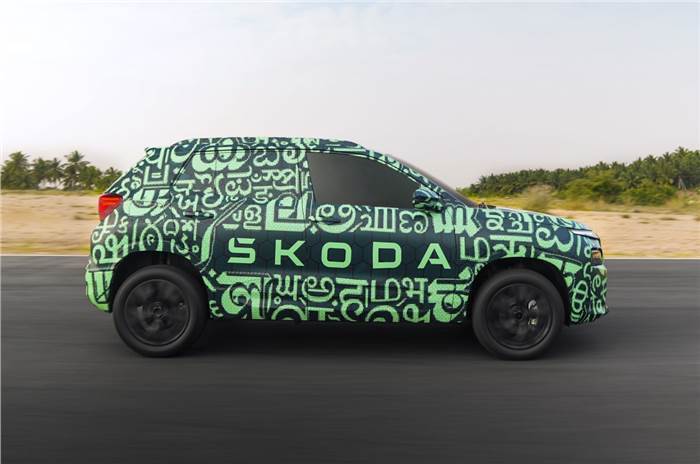Volkswagen India will launch a compact SUV in 2026, essentially the Skoda Kylaq, with significant exterior changes to align with VW’s design language. The two models will be mechanically identical, continuing the current platform-sharing strategy.
VW India’s compact SUV strategy
Volkswagen India had initially decided against entering the compact SUV segment, leaving the Skoda Kylaq to lead the charge for the VW Group in the sub-4-metre category. The German brand remained sceptical of India’s sub-4-metre market due to profitability concerns and past failures, such as the Ameo. VW invested around 70-75 million euros in developing the Ameo, but the oddly styled compact sedan, with its truncated boot, struggled in the market, selling only 32,000 units between 2016 and 2020. The Ameo failed to justify its investment, especially since Skoda, citing the same concerns, didn’t introduce its own version, thus losing out on economies of scale needed. Also, the sub-4-metre segment, which gets special tax breaks, is unique to India, and hence, the export potential is very limited again, restricting scale and volumes.
Another key factor behind VW’s initial reluctance to enter the compact SUV segment was the group’s global strategy of dividing responsibilities between its brands. Skoda was tasked with leading the development of internal combustion engine (ICE) models, especially in markets like India, while Volkswagen focused on EVs. As part of this strategy, the MQB A0 platform, which underpins compact ICE models like the Skoda Kylaq, was assigned to Skoda. With the focus on EVs, VW was hesitant to invest further in new ICE models. In fact, company sources revealed that the initial plan was for VW to completely exit the ICE market in India by 2028 with the run-out of the Taigun and Virtus. The brand would then sell only small-volume CKD models, such as the Tiguan and Tayron, and concentrate on building an EV range.
However, in a significant shift, VW now plans to launch its version of the Kylaq in 2026. This change comes in response to various market dynamics, particularly the realisation that the transition to EVs will be more gradual than anticipated, especially as demand for them begins to plateau. Also, both VW and Skoda are far behind in India’s EV race, with no mass-market electric offering planned till 2027.

Furthermore, Skoda India’s leadership upheavals have impacted the company’s sales and allowed sister brand and market rival VW to surge ahead. The concern is that Skoda sales alone would not be sufficient to generate the volumes required to justify the estimated 250 million euros invested for the development of the compact SUV or project ‘India 2.5’.
Volkswagen compact SUV: what to expect
For VW, the development of its version will cost just a fraction of the total amount. Company sources say that the VW SUV will cost ‘around 25 million euros’ to develop. This will include a new grille, front and rear lights, bumpers and an outer skin for the tailgate. Interior, too, may have some differentiation.
Mechanically, the VW SUV is likely to be identical to the Kylaq, which means it will have the same MacPherson strut front suspension and rear twist beam axle, and the 115hp, 1.0-litre direct-injection turbo-petrol is likely to be the sole engine on offer. The larger 1.5-litre unit would disqualify the SUV from lower tax benefits that apply to cars under 4 metres and with a petrol engine with a displacement of under 1.2 litres. However, VW may have a special 1.5 ‘GT’ version for customers who don’t mind paying for more performance.
The compact SUV segment in India is the biggest slice of the market but also the most crowded, and VW will be late to a very busy party. The challenge will thus be to craft a product within tight design boundaries and one that can resonate with car buyers who are spoilt for choice.
